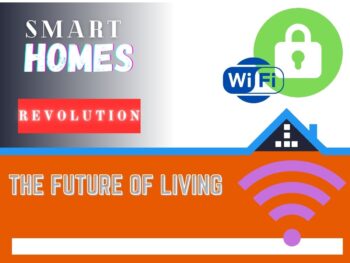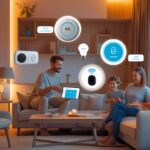The concept of smart homes has been around for some time, but in recent years, it has gained significant traction as technology has advanced, and more and more devices have become connected. A smart home is a residence equipped with devices that can be controlled remotely or automated through a central system. In this blog post, we’ll take a closer look at the potential of smart homes and how they can transform the way we live.
Potential of Smart Homes
Smart homes offer numerous benefits, including increased convenience, energy efficiency, and security. By automating tasks that would otherwise require manual intervention, smart homes can free up time and simplify daily life. For example, you can remotely control your home’s lighting, temperature, and security from your smartphone, reducing the need for manual adjustments and increasing convenience.
In addition, smart homes can help save energy and reduce your carbon footprint. Smart thermostats, for example, can automatically adjust the temperature based on your preferences and daily routines, optimizing energy usage and potentially reducing your energy bills. Similarly, smart lighting can automatically turn off when no one is in the room, saving electricity and reducing energy waste.
Smart homes can also enhance security, providing greater peace of mind for homeowners. By automating security systems, you can remotely monitor your home and receive alerts in case of unauthorized access or suspicious activity. Smart cameras can provide visual surveillance of your property, while smart doorbells can allow you to see and communicate with visitors even when you’re not home.
Challenges Facing Smart Homes
Despite the potential benefits of smart homes, there are several challenges that must be addressed in order for them to become more widespread. First, there are technical challenges related to device compatibility and connectivity. As smart homes involve a range of different devices, it can be difficult to ensure that they are all compatible and can communicate with each other effectively. This can result in a fragmented experience for users and may limit the overall potential of smart homes.
Second, there are security challenges related to the use of connected devices. As more devices become connected, the risk of cyber attacks and data breaches increases. This can result in significant privacy and security concerns for users and may limit the overall adoption of smart homes.
Third, there are economic challenges related to the cost of smart home devices and the availability of reliable internet connectivity. While the cost of smart home devices has come down significantly in recent years, they are still more expensive than traditional home appliances. In addition, some areas may not have reliable internet connectivity, which can limit the effectiveness of smart home devices that require a strong internet connection.
Despite these challenges, the potential benefits of smart homes are driving significant investment and innovation in the space. As the technology continues to advance, it’s likely that these challenges will be addressed, making smart homes more accessible and widely adopted.
Examples of Smart Home Devices
There are a wide variety of smart home devices on the market, ranging from basic devices like smart thermostats and lighting to more advanced devices like smart fridges and home security systems. Here are a few examples of smart home devices and their potential benefits:
Smart thermostats: These devices can automatically adjust the temperature in your home based on your preferences and daily routines, optimizing energy usage and potentially reducing your energy bills.
Smart lighting: These devices can automatically turn off when no one is in the room, saving electricity and reducing energy waste.
Smart locks: These devices allow you to remotely control and monitor the locks on your doors, providing greater security and peace of mind.
Smart doorbells: These devices allow you to see and communicate with visitors even when you’re not home, enhancing security and convenience.
Smart speakers: These devices can be used to control other smart home devices and provide entertainment and information.
Smart appliances: These devices include smart fridges, ovens, and washing machines that can be controlled remotely and can provide insights into energy usage and maintenance needs.
Future Potential of Smart Homes
The potential of smart homes goes beyond the benefits listed above. As the technology continues to advance, we can expect to see more advanced features and capabilities, including:
Artificial intelligence: As smart home devices become more sophisticated, they may incorporate artificial intelligence to provide even more personalized and automated experiences.
Virtual assistants: Virtual assistants like Amazon’s Alexa and Google Assistant are already a part of many smart homes, but we can expect to see even more advanced virtual assistants in the future that can perform more complex tasks and provide more comprehensive support.
IoT integration: As the internet of things (IoT) continues to expand, we can expect to see more devices and systems integrated into smart homes, providing a more seamless and connected experience.
Health and wellness features: Smart homes can potentially help with health and wellness by providing insights into sleep patterns, exercise routines, and nutritional needs.
In conclusion, smart homes have the potential to transform the way we live, providing increased convenience, energy efficiency, and security. While there are challenges to be addressed, the technology and investment in the space suggest that smart homes will continue to evolve and become more accessible to consumers. As we look to the future, the potential of smart homes is vast, and the impact on our daily lives could be significant











